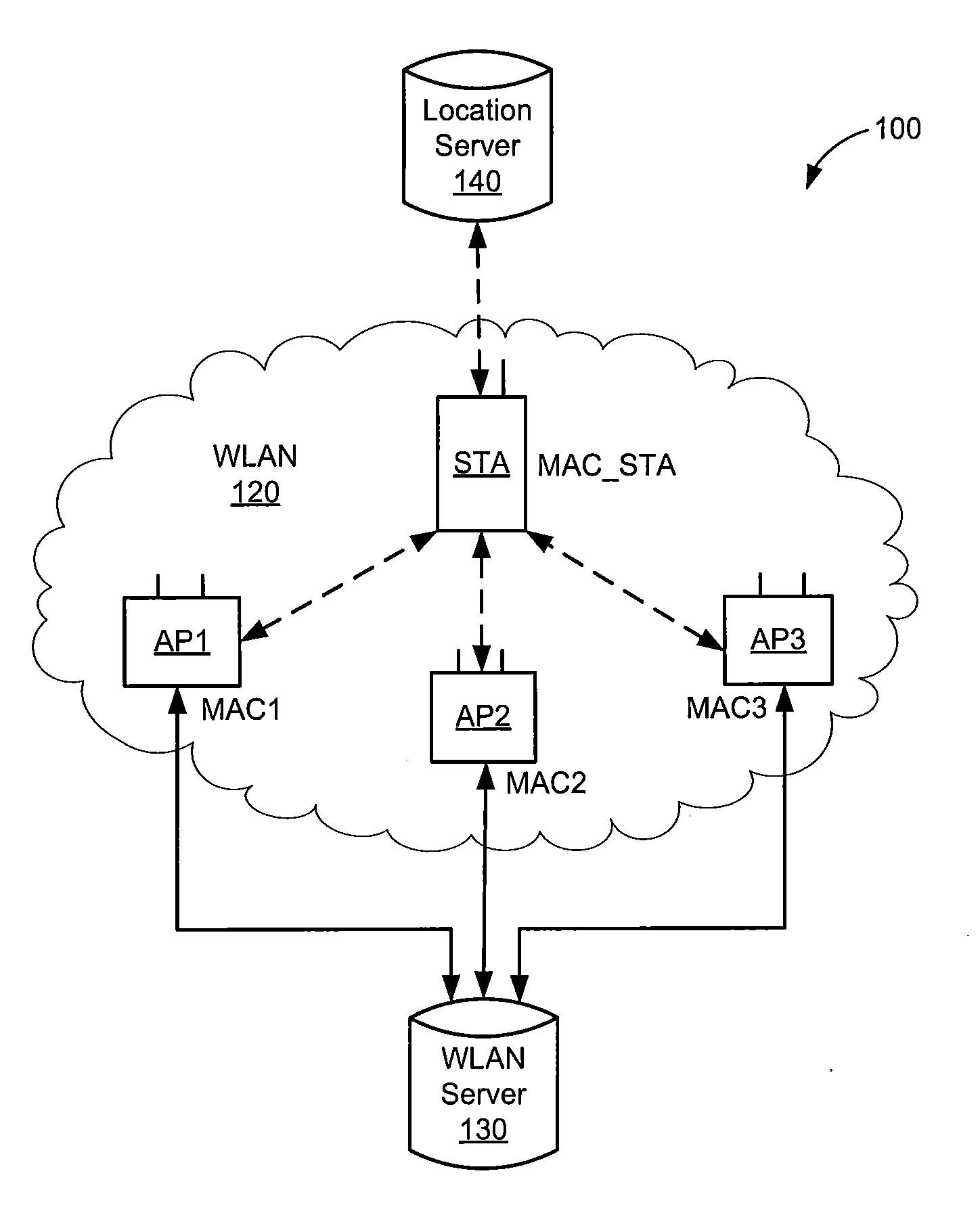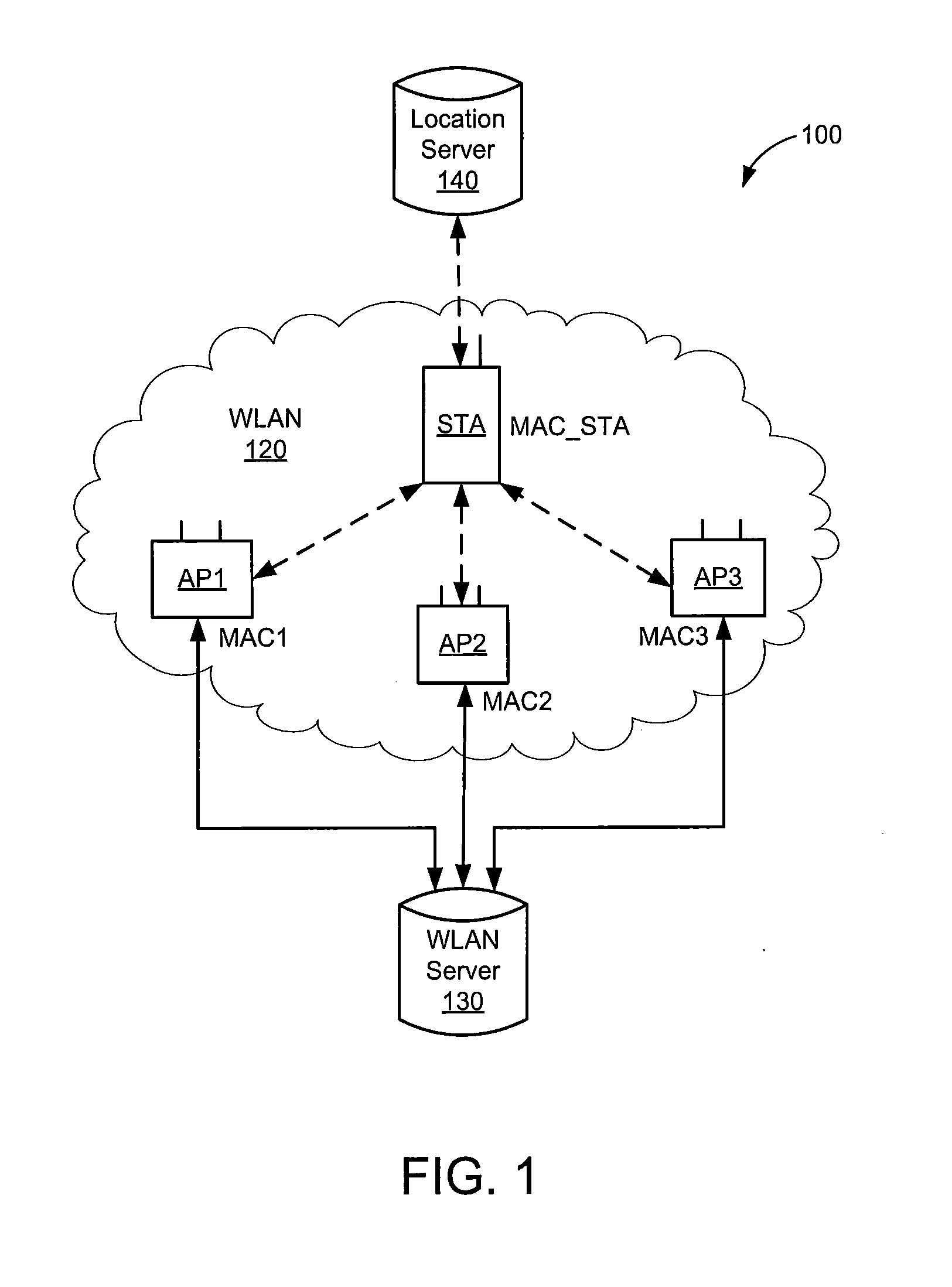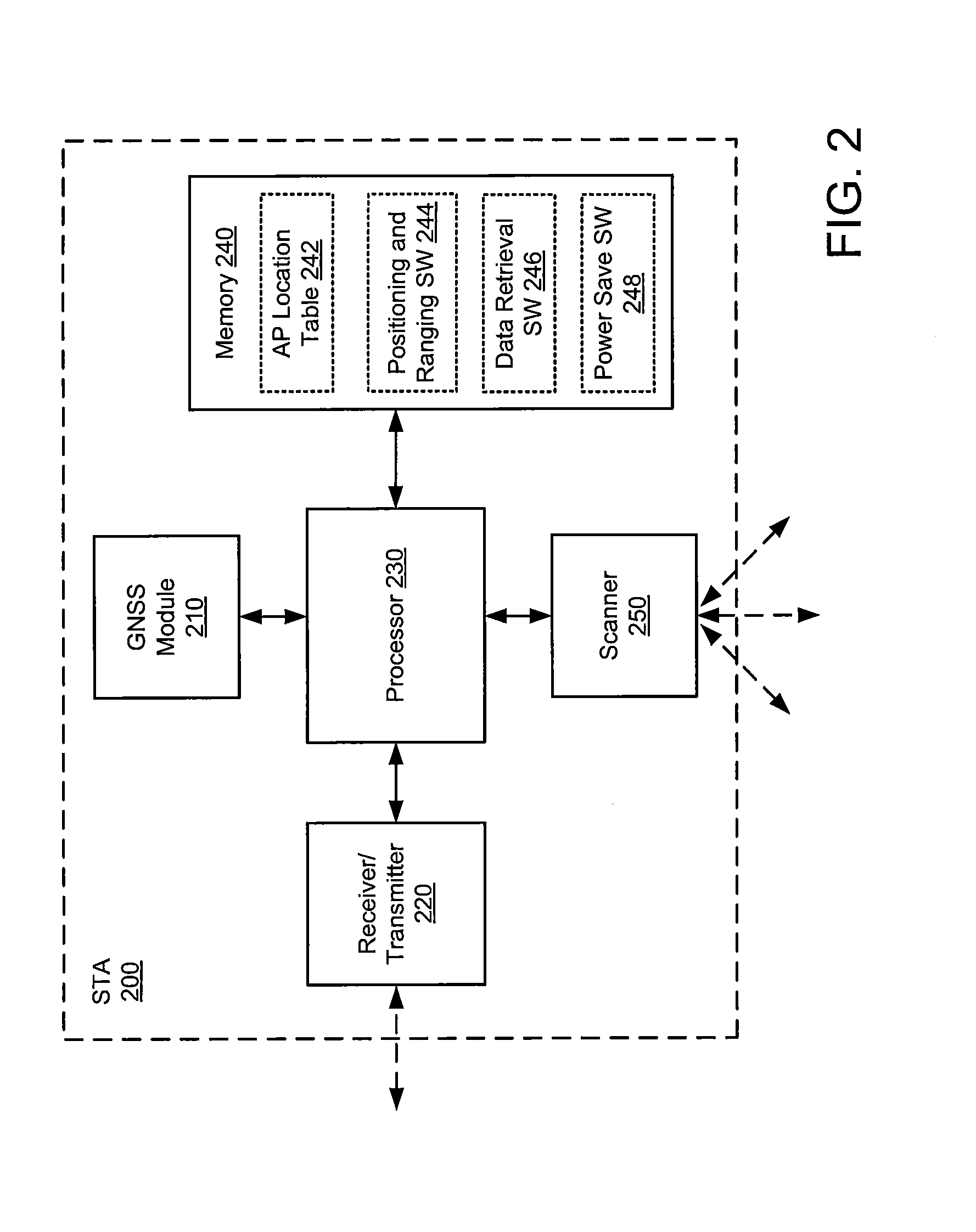Method for ranging to a station in power saving mode
a power saving mode and aps technology, applied in power management, high-level techniques, instruments, etc., can solve the problems of not knowing whether the sta is in the power saving mode, difficult to initiate ranging operations, and difficult for other aps not associated with the sta to initiate such ranging operations, so as to achieve the effect of keeping the sta awake longer
- Summary
- Abstract
- Description
- Claims
- Application Information
AI Technical Summary
Benefits of technology
Problems solved by technology
Method used
Image
Examples
Embodiment Construction
[0016]The present embodiments are described below in the context of ranging operations performed by and between Wi-Fi enabled devices for simplicity only. It is to be understood that the present embodiments are equally applicable for performing ranging operations using signals of other various wireless standards or protocols. As used herein, the terms WLAN and Wi-Fi can include communications governed by the IEEE 802.11 standards, Bluetooth, HiperLAN (a set of wireless standards, comparable to the IEEE 802.11 standards, used primarily in Europe), and other technologies having relatively short radio propagation range. Further, the term “associated AP” refers to an AP of a WLAN that currently has an established communication channel or link with a STA within range of the WLAN, and the term “non-associated AP” refers to an AP of the WLAN that does not currently have an established communication channel or link with the STA.
[0017]In the following description, numerous specific details a...
PUM
 Login to View More
Login to View More Abstract
Description
Claims
Application Information
 Login to View More
Login to View More - R&D
- Intellectual Property
- Life Sciences
- Materials
- Tech Scout
- Unparalleled Data Quality
- Higher Quality Content
- 60% Fewer Hallucinations
Browse by: Latest US Patents, China's latest patents, Technical Efficacy Thesaurus, Application Domain, Technology Topic, Popular Technical Reports.
© 2025 PatSnap. All rights reserved.Legal|Privacy policy|Modern Slavery Act Transparency Statement|Sitemap|About US| Contact US: help@patsnap.com



